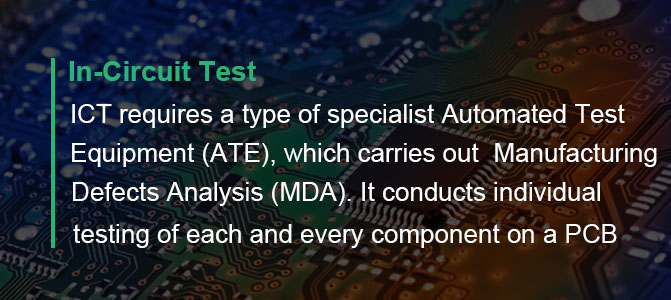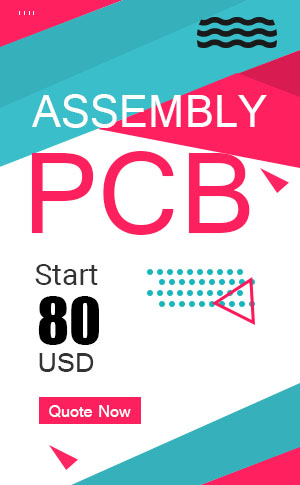General, quoting & support.
Add: Building E, No.58, Nanchang Road, Xixiang , Baoan District Shenzhen City, Guangdong, China
Tel : 0755-27348887
Fax : 0755-27349876
E-mail : svc@pcbastore.com
Why is PCB Design Important for a Successful In-Circuit Test?
Fannie / 2018-01-09
Contents [hide]

In spite of the development of competing test technologies, In-Circuit Test (ICT) remains one of the effective ways of testing a PCB assembly. The enduring appeal of the ICT comes from the test speed, which is usually only a few seconds. In addition to this, the test is precise, and component-level detection of errors accelerates the diagnosis process, making it less skilled. This post discusses the importance of in-circuit test in a PCB design.
What Is In-Circuit Test?
ICT requires a type of specialist Automated Test Equipment (ATE), which carries out Manufacturing Defects Analysis (MDA). It conducts individual testing of each and every component on a PCB. Also, it verifies things such as basic supply voltage measurements, diode and transistor orientation, and passive component measurements (resistors and capacitors). It looks for faults in open and short circuits.
Why is PCB Design Important?
For carrying out ICT, one needs to invest in a bed of nails test fixture and a dedicated test program that together cost more than $ 12000. As a result of this high Non-Recurring Engineering charge (NRE), this method is apt for high volumes, and stable designs.
How Should You Design Your PCB Layout?
For getting the most out of a test strategy, you should consider following points while designing the layout of a PCB assembly:
1.Test Pad Access: Electrical networks having "no connects" (i.e. IC pins that are not connected), should have a test pad, which is designed into the PCB. There is an exception in case of conventional "through-hole" technology, where it is fine to probe onto the component leg on the solder side of the assembly. Ideally, the diameter of the pad size is 0.05 inches and pads should be at least 0.1 inches apart from each other and other components. This allows the use of robust test pins. Also, the pads should be at least 0.125 inches away from the PCB edge.
2.Design Stability: It is very important to make sure whether the design is stable before committing to a fixture as these can be quite expensive.
3.Bottom-Side Probing: The test pad should ideally be on the solder side of a PCB. It is feasible to probe on both the sides. The wiring and additional transfer probes it makes the fixture expensive if top-side probing is needed.
4.Solder Side: No components should be present on the solder side unless it is unavoidable.
5.Tooling holes: Always remember to add tooling holes to the main PCB. These tooling holes enable the tooling pins to locate the PCB in the fixture. These holes are 3 to 4mm in diameter, with no plating. They should be located in diagonally opposite corners, with around 5mm of clear space around them, so that the fixture tooling pins don’t short out to tracks or components.
6.In-Circuit Test: In-circuit test systems often have the capability of programming devices during the test cycle. This is not only convenient, but also helps to increase the overall cycle time dramatically. One should make sure if these devices can be pre-programmed before placement. One must also ensure if the tester is able to hold these devices in a reset state after the power is applied.
7.Pull Up (Or Pull Down) Resistors: The pull up or pull down resistors should be used on all device signal pins, instead of tying them to power rails directly. This allows the test machine to control the signals. This is mainly important for pins holding digital devices in a reset or high impedance state. This may not be obligatory for the product to function, however, is very useful in test while trying to separate individual components in a circuit.
8.Leave Space: The fixture top on the PCB needs to be able to push down. For this purpose, you should allow at least a 2mm diameter space on the PCB between the components for pusher rods. The components should be spaced evenly around the PCB area.
9. Batteries: Preferably, it is not recommended to fit batteries until after the test. However, if they are present, design in a removable link for disconnecting them during ICT
It requires efforts to design a PCB for in-circuit test. However, it is very much essential to take into account the points explained above, to save costs in the future. The reasons explained above make it clear why PCB design is necessary for ICT.
If you have any comments or suggestions about this post, please leave a reply here
Previous article:Why is my PCB Assembly Quote so Expensive?







